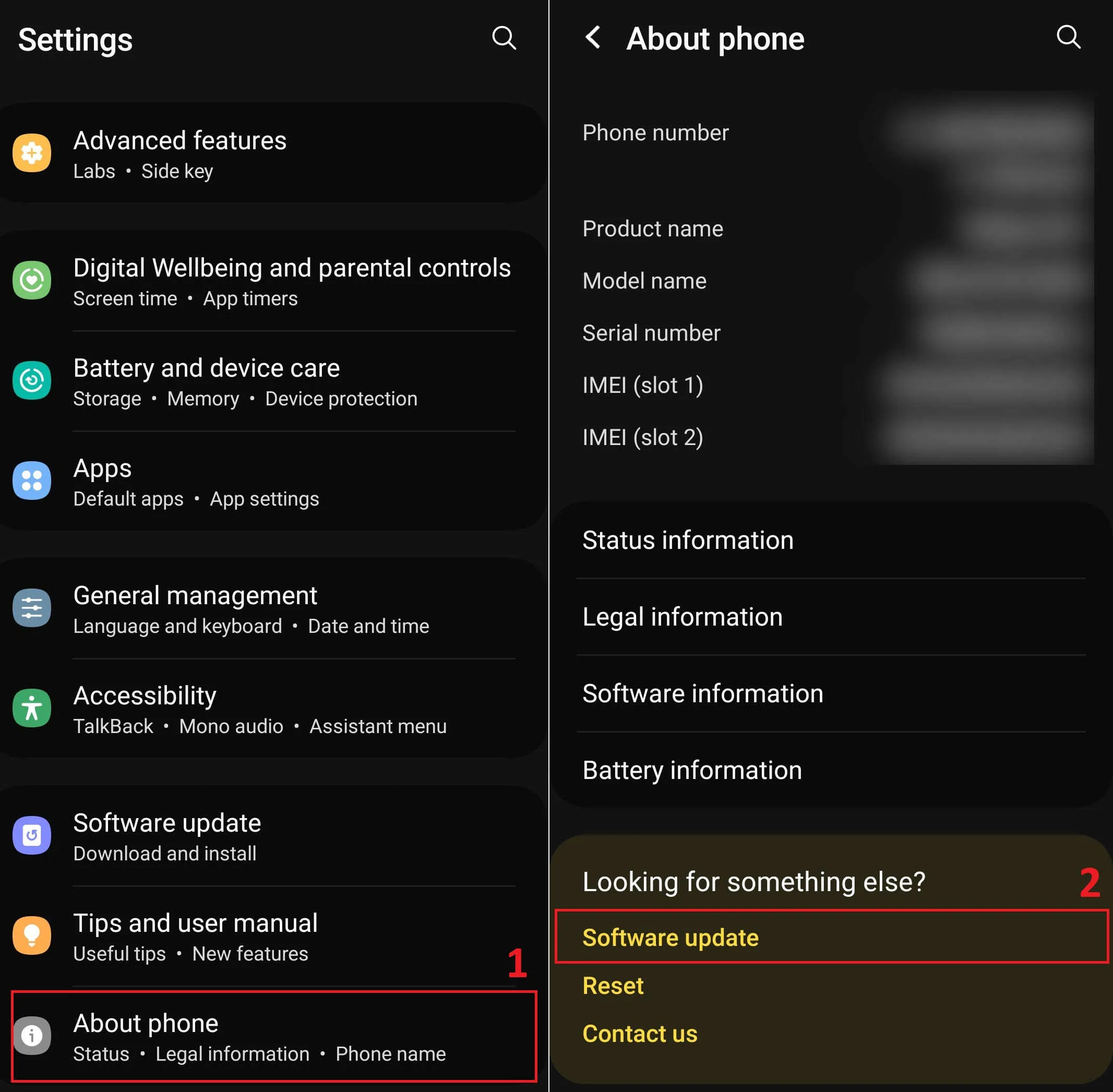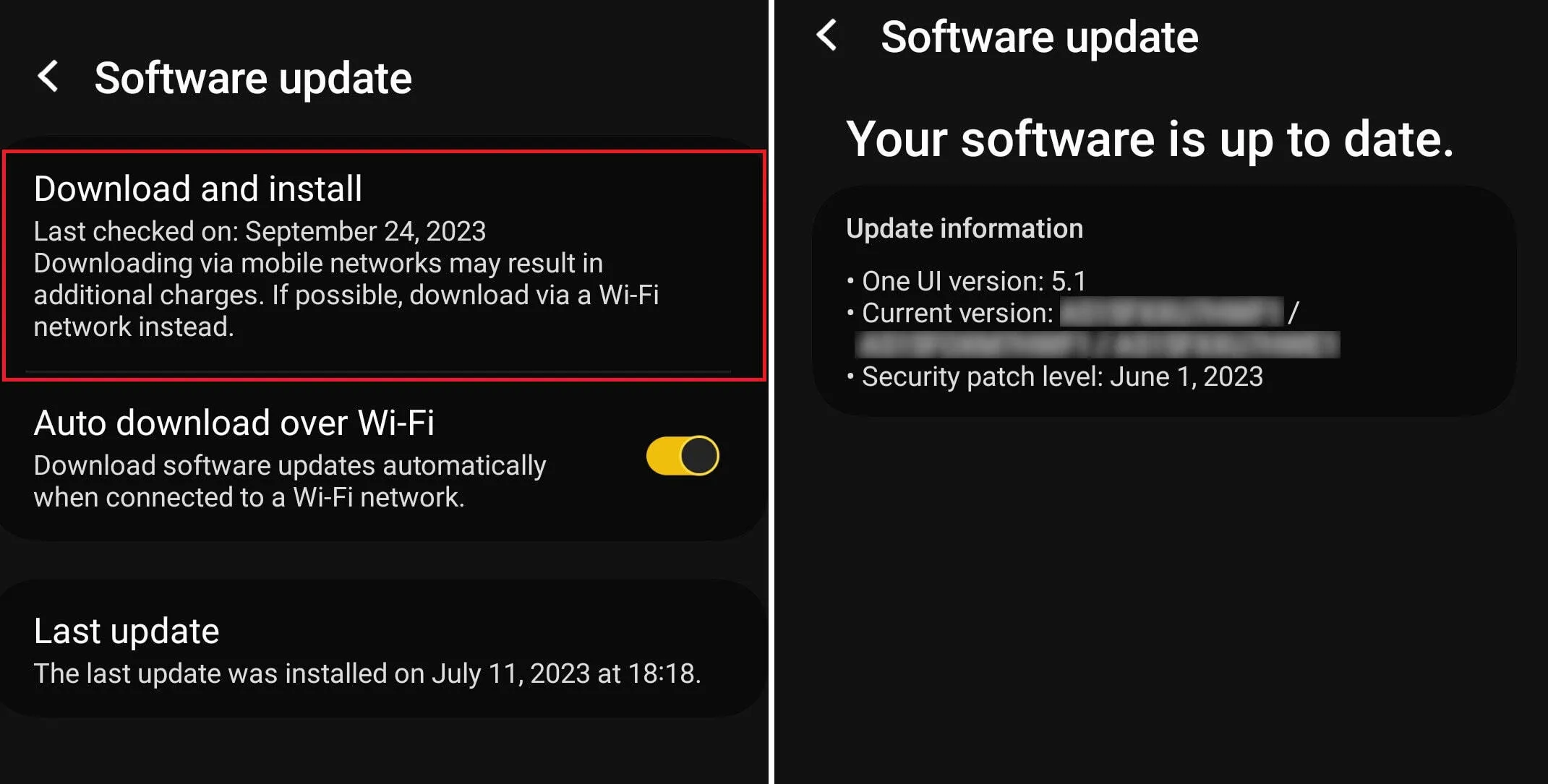Usually, as soon as a newer version of Android becomes available, the user will receive an update notification and have the option to choose whether to download and then install the new version. If you don’t get such notification or if the update fails you will have to try to update the operating system manually.
Here are three options to update your Android system:
- Automatic Update: This is the easiest way. Go to ‘Settings,’ find the ‘Software Update’ menu, and let your device check for updates. If a new version is available, it will guide you through the process.
- Manual Update: If your device is not working properly or the Automatic Update didn’t detect a new version, you can perform a manual update using dedicated Device Management Software, by connecting your device to your computer using a data cable, and following the update instructions.
- Manual Upgrade: For advanced users, there’s the option of using specialized software installed on your computer. This software can rewrite the device’s operating system, but be cautious as it requires technical knowledge and can be risky.
It’s essential to keep system device up to date to ensure optimal performance and security. Remember that the process might vary depending on your device manufacturer (e.g., Samsung, LG, Xiaomi) and the device model. You can usually find detailed instructions on the manufacturer’s website or the user manual.
The benefits of keeping your device up-to-date
There are several reasons why you might want to update your Android to a newer version. The primary reason is that, typically, a new version brings improved stability to the operating system, along with new software features.
However, there are instances when the motivation for an update stem from existing problems within the system or compatibility issues caused by installed applications that are no longer supported by older versions of Android.
In any case, the update will repair the Android system and increase the stability and software security of the device, as well as compatibility with new applications released in Google Play Store.
It is strongly recommended to keep your Android system up to date by installing compatible versions whenever they become available.
Preparation for the Update
The update operation will not remove your stored files and data, such as pictures, documents, messages, apps, etc. However, for complete data safety, it is strongly recommended to create a backup of all files and data before proceeding.
Preparation steps for your device are essential to ensure a smooth update process. Please ensure that you have:
- Sufficient battery or, ideally, charge your phone or tablet before initiating the update.
- A stable Wi-Fi connection to facilitate the download of the new version.
- Adequate storage space available on the device to accommodate the installation of the new version.
Very important notes:
- The safest method to update your Android phone or tablet is through the Settings menu. Updating from an external source, such as a computer, carries a higher risk of errors.
- Interrupting the update can result in a complete compromise of the operating system, rendering the phone or tablet unusable.
- Please note that the update operation may take anywhere from several tens of minutes to several hours to complete.
Method 1: How to update Android from the device settings
If your phone or tablet is accessible, updating it is a straightforward process that can be done directly from the system.
Go to ‘Settings’, select ‘About phone’ or ‘About tablet’, and then tap ‘Software update’.

Tap “Download and Install” to start checking for a new version of Android.

If there’s a newer version available, a window will appear, allowing you to download the latest version. Click the ‘Update’ button and wait for the download to complete.
Once the latest version of Android is downloaded, press the ‘Install’ button.
Your device will eventually reboot and begin the installation process for the new Android version.
Method 2: Manually update Android by connecting the phone or tablet to a computer via a data cable.
If the phone or tablet cannot be used, preventing you from updating it using the previous method, or if there are new Android versions not detected by the system, you can update the device through a computer with device management software installed.
Device management software is a unique program provided by each manufacturer, enabling you to connect your phone or tablet to your computer using a data cable. With this software, you can perform various tasks, including data backup, device restoration, file transfers, and Android update.
To update Android using a Device Management Software follow the steps below.
1) Download the program and install it on your computer
Visit the official website of the device manufacturer (Samsung, LG, Motorola, etc.) and navigate to the download section.
Look for the device management program associated with your specific device. Here are some examples:
- Kies - for Samsung devices
- MDM (Motorola Device Manager) - for Motorola devices
- LG PC Suite - for LG devices
- HiSuite - for Huawei devices
- Google Pixel Update Software - for Google Pixel devices
- OnePlus Device Manager or OxygenOS Updater - for OnePlus devices
- Xperia Companion - for Sony Xperia devices
- Asus PC Link or Asus PC Suite - for Asus devices
- HTC Sync Manager - for HTC devices
- Xiaomi Mi PC Suite - for Xiaomi devices
2) Launch the program, connect your phone or tablet to your computer using a data cable, then start the update
Once connected, access the update center from the program’s menu and initiate the search for updates.
If updates or new Android versions are available, a window will appear displaying information about the detected updates or the new version’s features. Click the “Update” button and wait for the download and installation process to complete.
Method 3: Upgrade Android by manually replace the operating system (should be avoided!)
The two methods for updating Android mentioned earlier have a limitation: they only detect the latest version available for the region where the device is being used and only those versions officially supported by the manufacturer for a specific phone or tablet model.
To install a specific Android version, whether it’s older, the latest, or not available in your region, you will need to root your device, download the desired Android version, and manually install it by flashing the firmware onto the device using specialized software.
The entire process is quite complex, and potential consequences may include the inability to use the device afterward, voiding the warranty, instability of the operating system, and a reduced level of security if the Android system is not downloaded from trusted sources.
Examples of programs that facilitate the installation of Android firmware include:
- Odin – for Samsung devices
- Flash Tool – for Sony Xperia devices
- HTC One Tool Kit – for HTC devices
- RSD Lite – for Motorola devices
- LG Bridge - for LG devices
- Mi Flash Tool - for Xiaomi devices
- Asus Flash Tool - for Asus devices
- Xperia Flashtool - for Sony Xperia devices
- Nokia Care Suite - for Nokia devices
- Google Pixel Update Software - for Google Pixel devices
- OnePlus Device Manager - for OnePlus devices
- Xiaomi Mi PC Suite - for Xiaomi devices
Please note that the availability of these programs may vary by region and device model, and manufacturers may update or change their software over time. Always refer to the official website or support resources of your device’s manufacturer for the most accurate and up-to-date information on the software required for updating your device.
